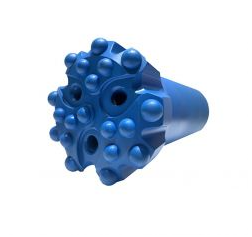Mining is a complex and challenging industry that relies on a wide range of specialized tools and equipment. These tools are crucial for extracting valuable minerals and resources from the Earth efficiently and safely. In this comprehensive guide, we will explore the various types of mining tools, their uses, and essential maintenance practices to ensure they perform optimally.

Types of Mining Tools
Drilling Equipment
Drilling is a fundamental step in mining operations. Tools like rock drills, rotary drills, and diamond drills are used to create holes for explosives, sampling, or exploration.
Excavation Tools
Excavation tools include shovels, loaders, and bulldozers. These heavy machines are used to remove overburden and access valuable ore deposits.
Blasting Tools
Explosives and blasting agents are crucial for breaking rock and ore into smaller, manageable pieces. Blasting tools and equipment, like detonators and blasting mats, ensure controlled explosions.
Material Handling Tools
Tools such as conveyor belts, bucket elevators, and haul trucks are used to transport mined materials within the mining site.
Supporting Tools
Ground support is vital for safety in mines. This category includes tools for roof and wall bolting, mesh installation, and rock bolters.
Surveying and Mapping Tools
Surveying equipment like theodolites, laser scanners, and GPS devices are used to accurately measure and map the mine site.

Uses of Mining Tools
Exploration and Prospecting
Many tools are used in the early stages of mining to locate and assess the quality of mineral deposits. This includes soil samplers, core drills, and seismic survey equipment.
Ore Extraction
Tools for breaking, drilling, and excavating are essential for accessing ore deposits. These tools create tunnels, shafts, and open pits to reach valuable resources.
Material Transportation
Material handling tools ensure the efficient movement of excavated materials within the mine, from loading to transportation.
Safety and Support
Tools for ground support, like roof bolters and mesh installation equipment, enhance mine safety by preventing collapses.
Data Collection and Mapping
Surveying and mapping tools help mine operators gather precise data on the layout of the mine, which is critical for safety and planning.

Maintenance Practices
Regular Inspections
Mining tools should undergo routine inspections to identify wear and tear. Any damaged components should be replaced promptly.
Lubrication
Proper lubrication is essential to prevent friction and extend the lifespan of moving parts in mining equipment.
Cleaning and Protection
Dust and debris can accumulate on mining tools, affecting their performance. Regular cleaning and protective coatings can mitigate this.
Training and Education
Mining personnel should receive training on tool operation and maintenance to ensure they are used correctly and safely.
Monitoring and Data Analysis
Advanced technologies, like condition monitoring systems, can provide real-time data on the health of mining tools, helping operators make informed maintenance decisions.
Mining tools are the backbone of the mining industry, enabling the extraction of valuable resources. Understanding the types of tools, their uses, and implementing proper maintenance practices is crucial for the efficiency, safety, and longevity of mining operations. By following best practices, mining professionals can ensure that their tools perform optimally, contributing to the success of their projects.





Comments
All Comments (0)